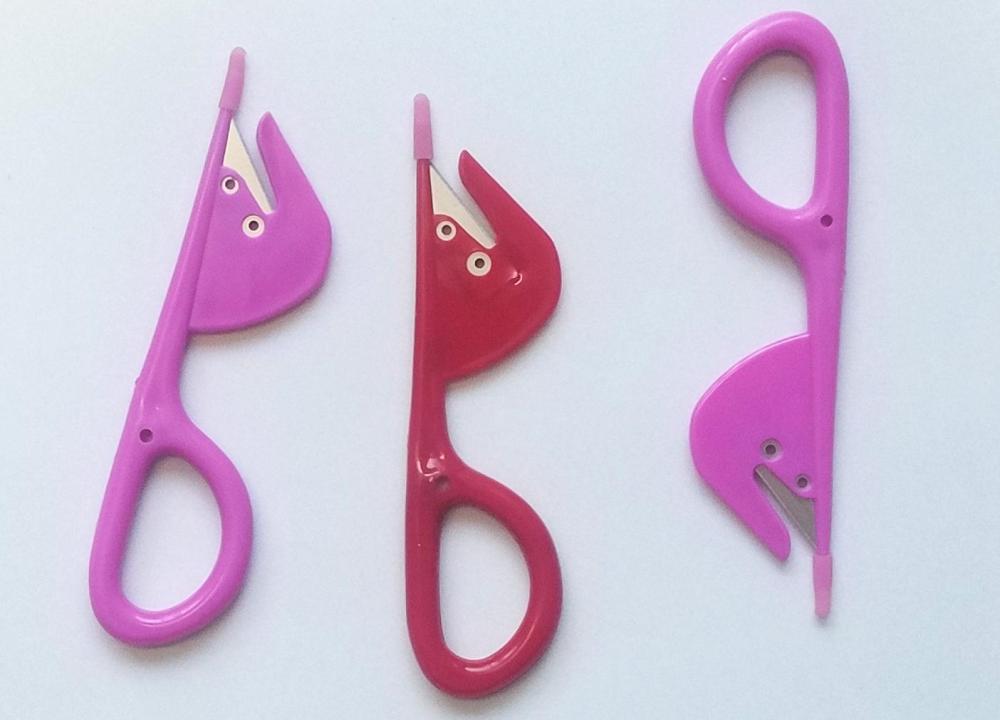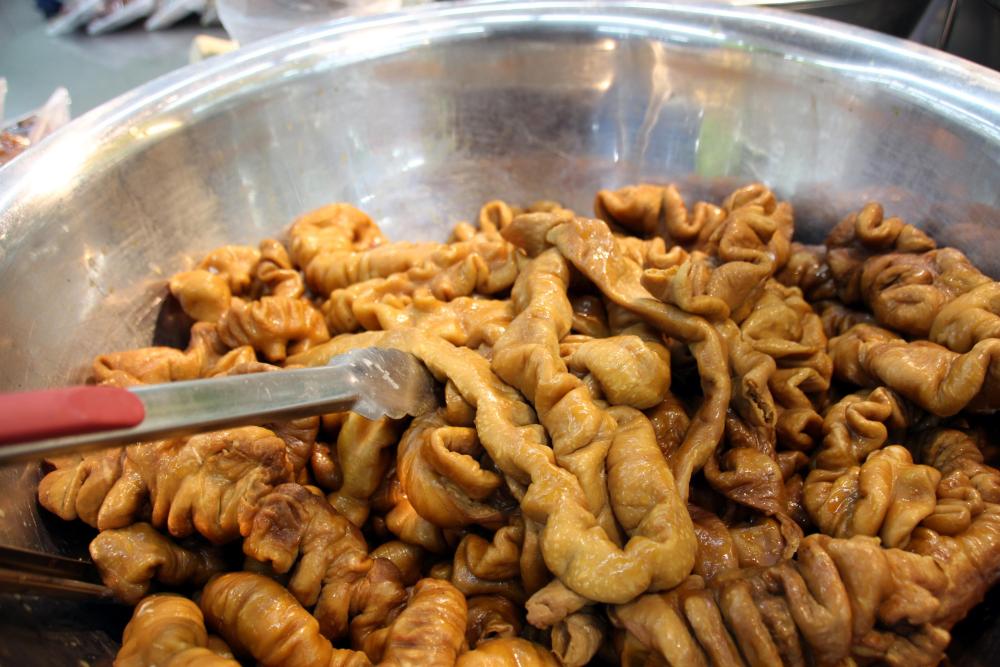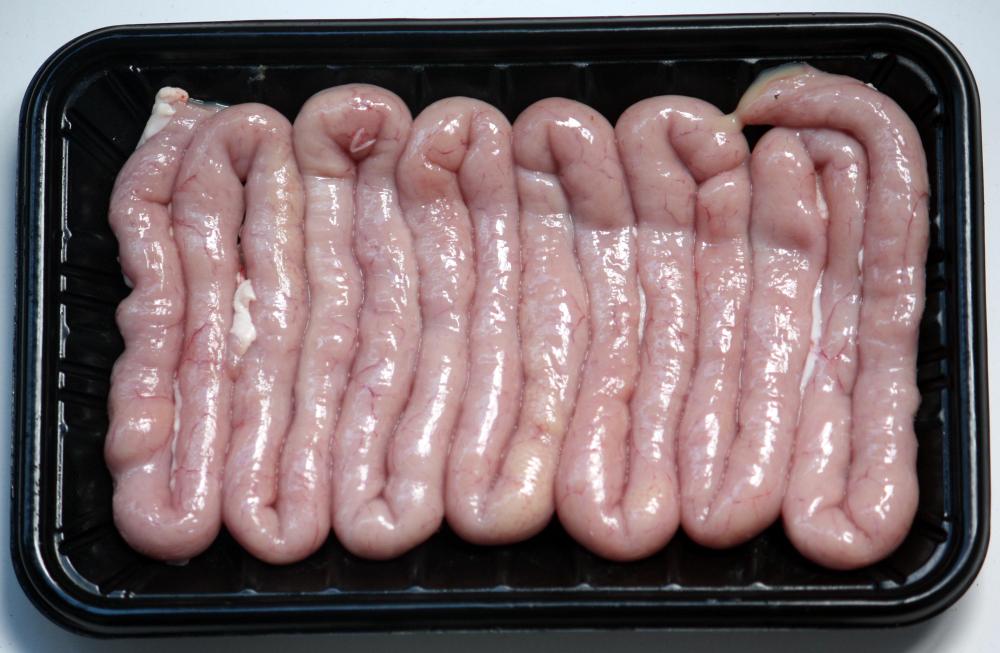Another connection between the soul food of the Southern States of the USA and the daily fare of China is the regard for or 猪肠 (zhū cháng) or 粉肠 (fěn cháng), the small intestines of the pig. Or as they are known in the USA by everyone but the USDA, ‘chitterlings’. The USDA thinks they are large intestines. They are wrong again!
(Yes, I know sometimes other animals are used, but not often).
Small Pig Intestines
These are another divisive part: people either love or hate them and they really have to be prepared correctly – especially when it comes to cleaning them. Several changes of water are needed, aided and abetted by baking soda and/or vinegar. For more on this see here. The advice given applies no matter which culture you are cooking in.
These knives are sold specifically to slit open the small intestines. They are useful for gutting small fish, too.

In Cantonese cooking intestines are often cooked in a casserole-type dish with 海鲜酱 (hǎi xiān jiàng), hoisin sauce or 柱侯酱 (zhù hóu jiàng), chee hou sauce. Round here, however, they are more likely to be stir fried with chillies. I’ve seen them mixed into congee or as part of a fried rice dish.
Like so many Chinese favourites, they are more about texture than flavour, but if cooked well, they shouldn't be over-chewy.
肥肠 (féi cháng) literally ‘fat intestines’ are the large intestines and these are also eaten, but are more often braised, especially in soy sauce with spices. These can be more chewy. They are sold raw or pre-cooked on deli counters in supermarkets.

Soy-Braised Large Pig Intestines



